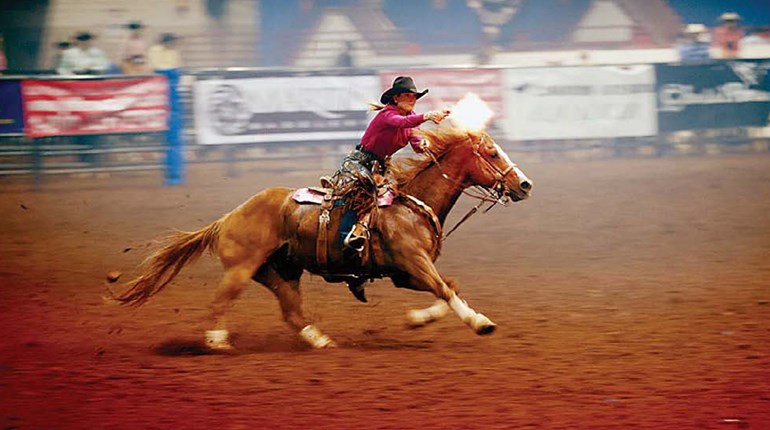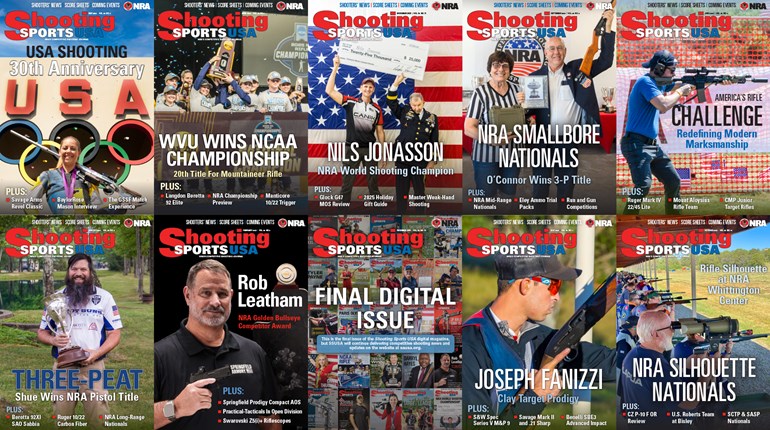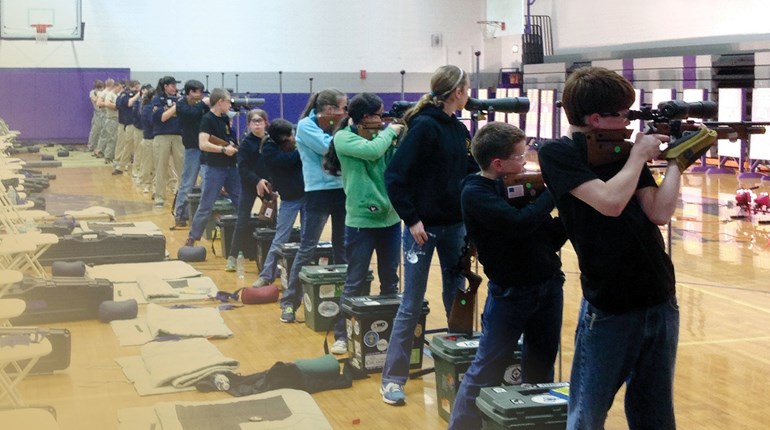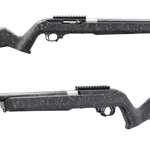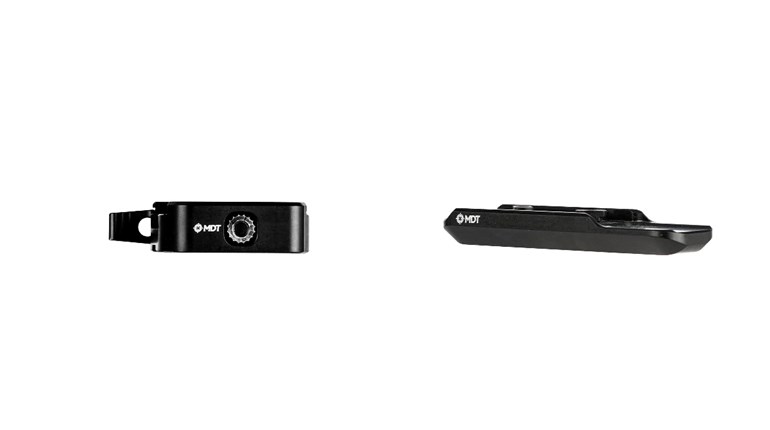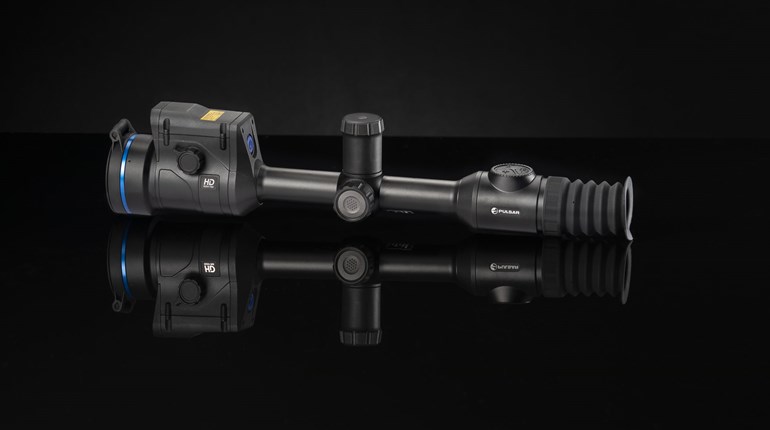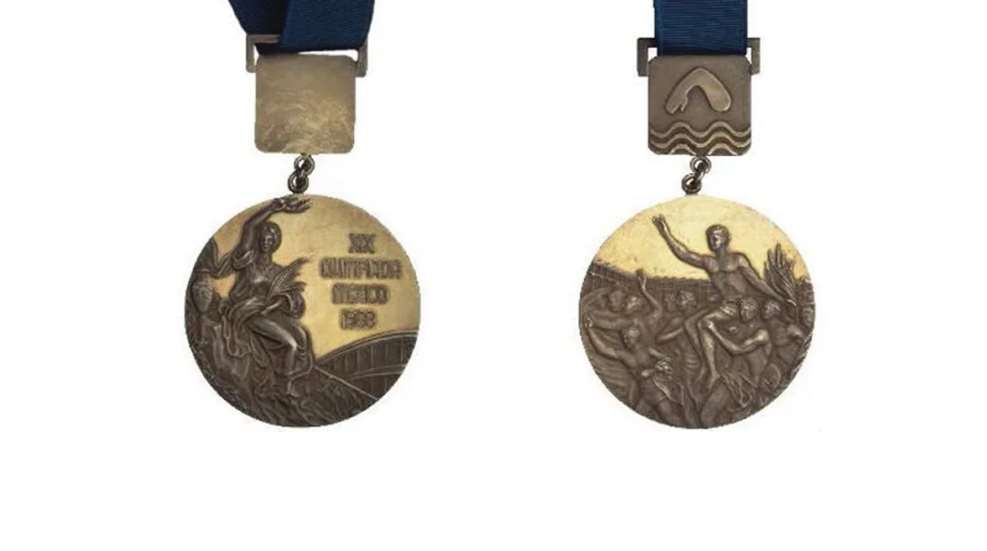
The below is an excerpt from the 1978 book, Olympic Shooting, written by Col. Jim Crossman and published by the NRA. Read Part 1 and Part 2.
1968—Mexico City (Part 3)
By Colonel Jim Crossman
During the tryouts, that outstanding woman rifle shot, Capt. Margaret Thompson (USA MTU) just lucked out. She finished eighth in the 300-meter event, third in the smallbore rifle 3-position and first in the English match. The prone match did not count in team selection and the No. 1 and No. 2 winners in the 3-position match did not fall out. So Margaret was left out, unfortunately. She would have shared the honor with three other women in Mexico City:
- Eulalia Rolinska, Poland, who finished in 22nd in the English match, with five scores of 99 and one 98 for a 593 total.
- Gladys de Seminario, Peru, in 31st in the English match with 591.
- Nuria Ortiz, Mexico, who finished with 191 and a good 13th in the skeet event.
But that's getting ahead of the story.
Because of the doubt about adjustment to altitude, alternates were invited to attend high altitude training for about 10 days. Due to personal reasons or a conflict with the big military CISM matches, all the alternates did not accept the invitation, but there was enough competition to keep the principals on their toes. High altitude training was begun September 14, and final team selection was announced on September 24.
The 1968 team was a powerful, experienced aggregation and we expected great things of them. In contrast to some Olympic athletes, this was a mature, seasoned bunch. The women's swimming team ranged in age from 14 to 21 years old. The shooters began at 21.5 years and ranged up to 39, with eight over 30 and five over 37.
In addition, the team was authorized a captain, coach or adjutant, and an armorer. The captain was Harry Reeves. Aside from winning the national pistol championship six times and shooting on the 1952 Olympic team, he had been a shooting member of innumerable other international teams, as well as captain of the U.S. 1967 Pan American team. I was selected as the team adjutant. Maj. Frank Green was armorer.
Because of the interest of the Service marksmanship units, the team took along an unofficial support group.
From the Air Force Marksmanship School came Lt. Col. Dick Rowden as the shotgun trainer, M/Sgt. Louis Willing as pistolsmith and Mr. Frank Coleman as shotgun gunsmith. The U.S. Army Marksmanship Training Unit produced Lt. Col. William Pullum (Ret.) as the rifle trainer, Ray Behnay as rifle gunsmith and Lt. Col. Bill Brophy (Ret.) as student of equipment used by the other shooters.
Although Green had been designated officially as the armorer, he functioned mainly as the pistol trainer, gunsmithing only his own guns.
Principals, alternates, support personnel and officials spent a very pleasant period at Santa Fe to determine the effects of altitude and to get accustomed to them.
We found that the thinner air caused some problems in the beginning. Rifle and pistol shooters could not hold their breath as long as usual and the shotgun shooters hustling from station to station suddenly found themselves out of wind. Many shooters with their own physical conditioning programs found they had to cut back on the strenuous work.
Do you remember all that special shotgun ammunition that was loaded to give more open patterns at altitude? It arrived in fine shape and a few patterns were shot to compare it with the standard ammunition. The test patterns were shot and counted and then more patterns were shot to compare it with the standard ammunition. The test patterns were shot and counted and then more patterns were shot and counted. Some 150 patterns later the conclusion was reached that in the case of the skeet ammunition, there was no difference between the experimental and standard ammunition. But in the case of the trap loads, in various chokes and with various shot sizes, the experimental ammunition without exception gave tighter patterns—the opposite of what was wanted and expected. So the shotgun shooters went back to their usual ammunition.
The shotgunners went right ahead shooting fine scores. The trap shooters did not have much problem adapting, but the skeet shooters did have a little changing to do, especially in doubles, when the second bird seemed to be getting out very rapidly. By the time the team left Santa Fe for Mexico, and a couple days processing stop was made in Denver, people were feeling good, shooting well and looking forward to Mexico with eagerness.
Living conditions in Mexico were not the best, with 15 people jammed into a small apartment with three bedrooms and 2½ baths, but this did not bother anyone very much. And the other features of the great Olympic Village and the Mexican preparations more than made up for some crowding.
After a few days to shake down, the team began turning in good scores at the practice range.
And then disaster struck—Bill McMillan and Arnie Vitarbo stopped off in Mexico City one afternoon with a shooting buddy assigned to the U.S. Embassy. They left their gun boxes in his apartment while they went out shopping. Coming back a couple of hours later, they found someone had broken into the apartment and had taken all the easily carried valuables—silver, money and McMillan's pistol box.
Bill had two of eight pistols especially made by High Standard for the rapid-fire pistol event. Bill had worked with these for three months and he had the sight settings, trigger pull, functioning and all the other little details exactly as he wanted them. And here it was, only five days before the start of the shooting!
We knew where some of the other pistols were located, so some frantic phone calls that night resulted in three pistols being delivered the next day into the hands of customs in Mexico City.
And there the pistols stayed. Despite pleading, tears, threats, correspondence, phone calls and personal visits, there they stayed. After a day or so of this with no progress, another pair of pistols was started to Mexico City. The two came in all right—just a few hours before the police returned the two stolen guns. And all of a sudden, there we were with seven pistols. That seemed to solve Bill McMillan's immediate problem.
After a few days of practice at Poligono 68, the rifle shooters found themselves embroiled in the great shooting coat hassle! And a ridiculous thing this turned out to be. According to the rules, a shooting coat recognized by the International Shooting Union or ordinary clothing, reinforced against wear and tear at various points, could be used. The thickness of the reinforcing was specified. No coat had been officially recognized by the UIT. But worldwide, nearly everyone was using the same sort of coat and had been for some years in UIT competitions, so by default, at least, this coat had been recognized by the UIT.
The coat was a heavy, thick and long leather affair with some padding throughout and with a series of straps on the outside. When a shooter got himself cinched up in this strait-jacket, with all the straps pulled tight, he was steady—there was no doubt about that.
Then the General Assembly in 1967 decided that the straps must go and that the coat must "hang loosely" on the shooter, with only buttons or zipper for fastening. So there was a worldwide session of cutting off straps and putting on buttons, something not to be undertaken lightly on a coat that costs more than $100.
Then the Technical Committee decided that the thickness of the coat, aside from the padding, should be not more than five millimeters when lightly compressed. There followed a parade of officials down the firing line at Mexico City, measuring coats and ruling them as legal or illegal. Unfortunately, each official seemed to have his own idea, and a given coat would be ruled legal one time and illegal the next time. It finally got to be a game with some of the shooters, seeing how many times they could get different rulings on a coat with different officials, and even with the same official.
About the time the shooters were buzzing like a bunch of mad bees, with some of them out behind the range hacking pieces out of the lining, wiser heads prevailed. It was ruled that a coat used in previous UIT matches was acceptable.
And so the matter was settled a few days before the matches began. The shooters had a chance to calm down and smooth their ruffled feathers. Not an example of Officialdom at its best!
Read Part 4 of our look back at the Mexico City 1968 Olympic Games. Subscribe to the free Insider newsletter for the latest updates.
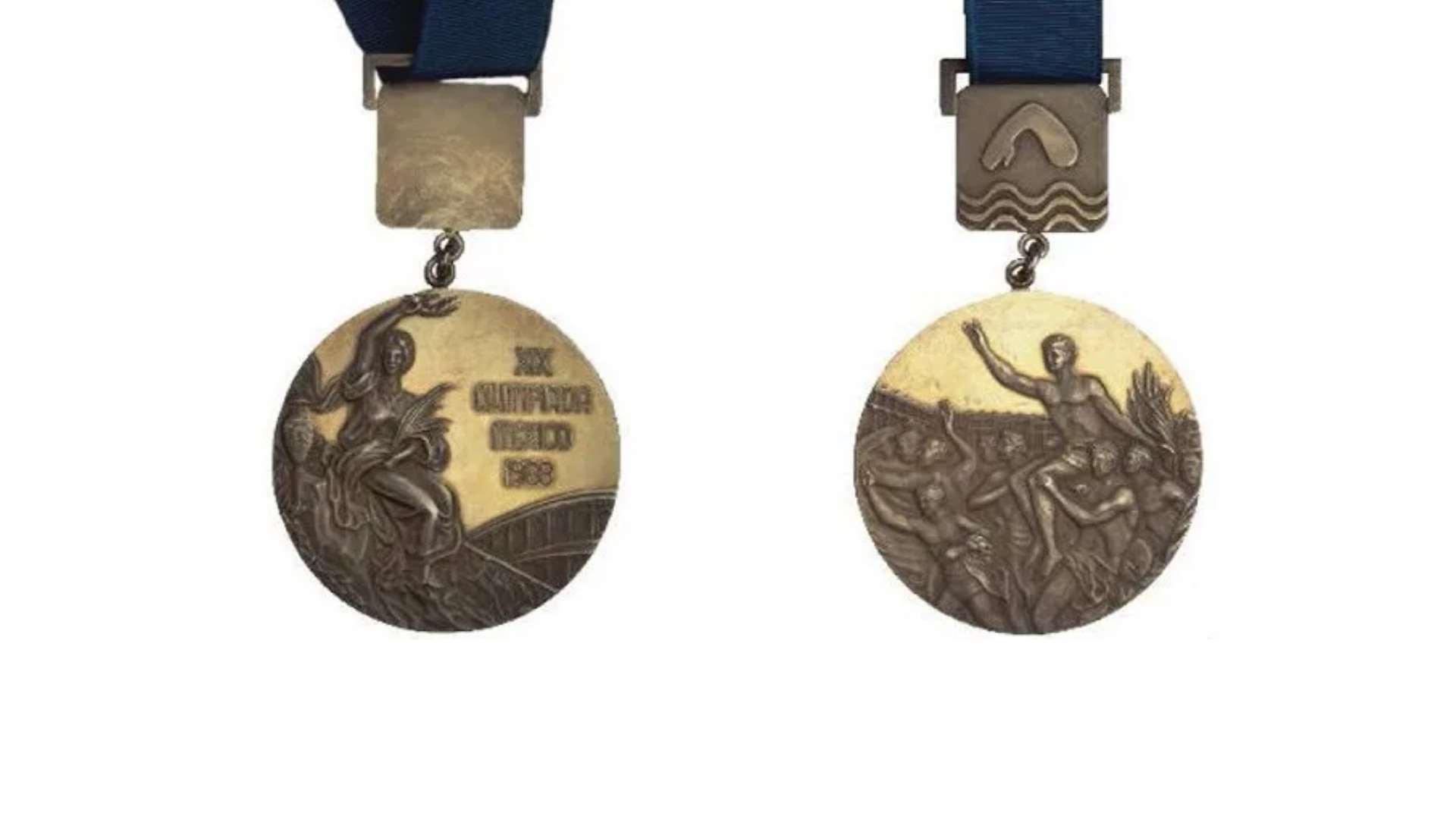
Photo: Mexico City 1968 Olympic Games gold medals. The obverse shows the goddess of victory, while the reverse depicts an Olympic champion in the foreground, along with the stadium in background. Photo courtesy IOC.
Read more: Legends: Harry Reeves













